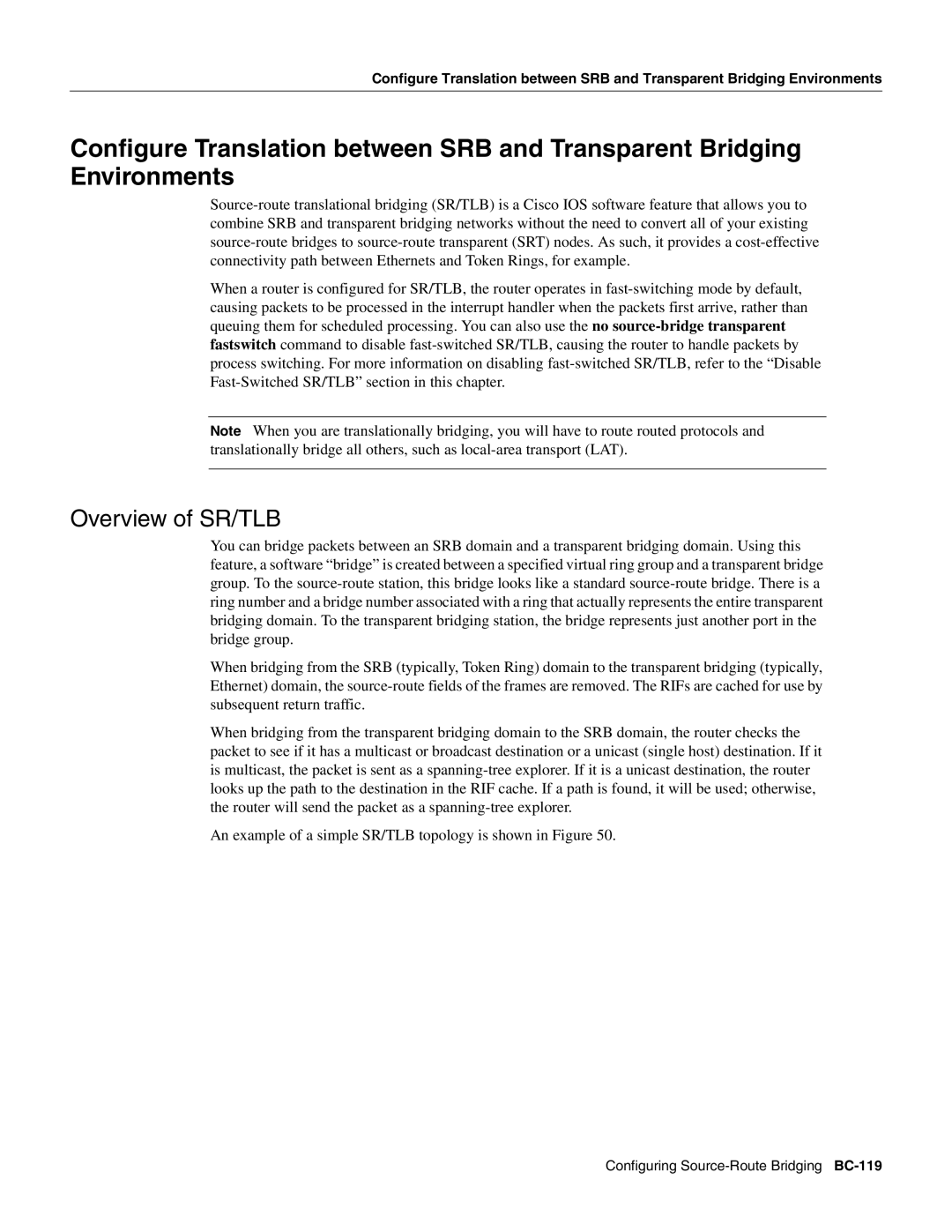Configure Translation between SRB and Transparent Bridging Environments
Configure Translation between SRB and Transparent Bridging Environments
Source-route translational bridging (SR/TLB) is a Cisco IOS software feature that allows you to combine SRB and transparent bridging networks without the need to convert all of your existing source-route bridges to source-route transparent (SRT) nodes. As such, it provides a cost-effective connectivity path between Ethernets and Token Rings, for example.
When a router is configured for SR/TLB, the router operates in fast-switching mode by default, causing packets to be processed in the interrupt handler when the packets first arrive, rather than queuing them for scheduled processing. You can also use the no source-bridge transparent fastswitch command to disable fast-switched SR/TLB, causing the router to handle packets by process switching. For more information on disabling fast-switched SR/TLB, refer to the “Disable Fast-Switched SR/TLB” section in this chapter.
Note When you are translationally bridging, you will have to route routed protocols and translationally bridge all others, such as local-area transport (LAT).
Overview of SR/TLB
You can bridge packets between an SRB domain and a transparent bridging domain. Using this feature, a software “bridge” is created between a specified virtual ring group and a transparent bridge group. To the source-route station, this bridge looks like a standard source-route bridge. There is a ring number and a bridge number associated with a ring that actually represents the entire transparent bridging domain. To the transparent bridging station, the bridge represents just another port in the bridge group.
When bridging from the SRB (typically, Token Ring) domain to the transparent bridging (typically, Ethernet) domain, the source-route fields of the frames are removed. The RIFs are cached for use by subsequent return traffic.
When bridging from the transparent bridging domain to the SRB domain, the router checks the packet to see if it has a multicast or broadcast destination or a unicast (single host) destination. If it is multicast, the packet is sent as a spanning-tree explorer. If it is a unicast destination, the router looks up the path to the destination in the RIF cache. If a path is found, it will be used; otherwise, the router will send the packet as a spanning-tree explorer.
An example of a simple SR/TLB topology is shown in Figure 50.

